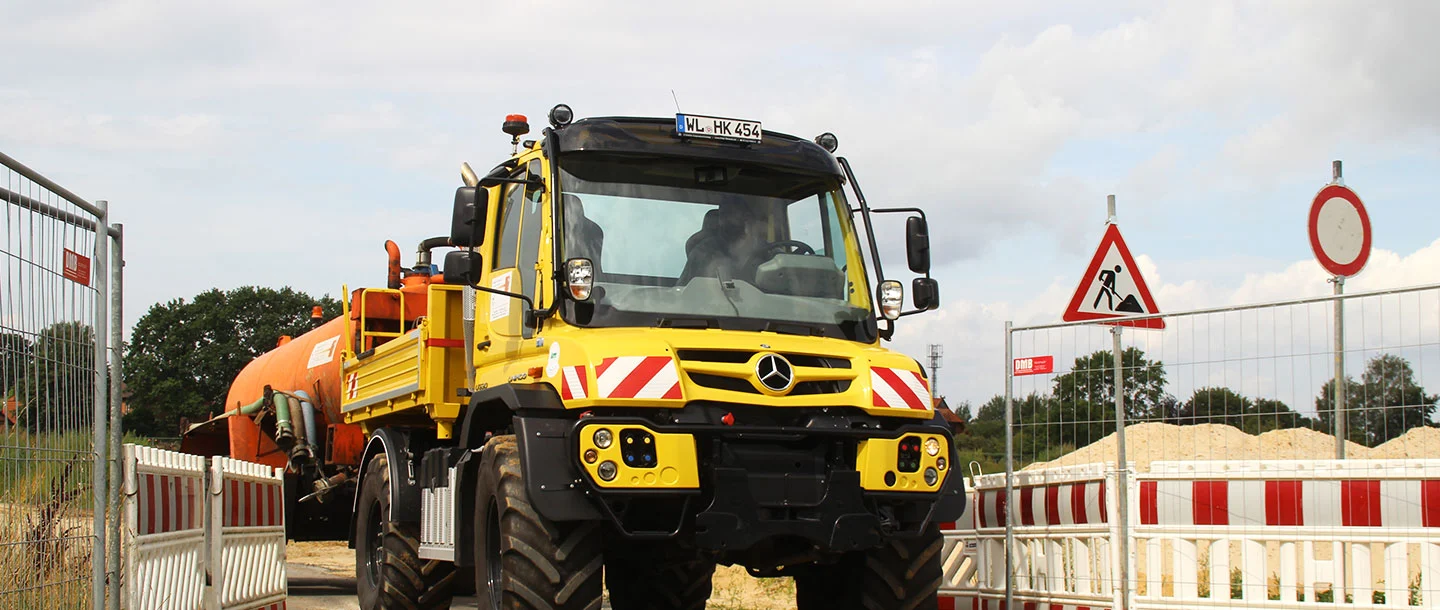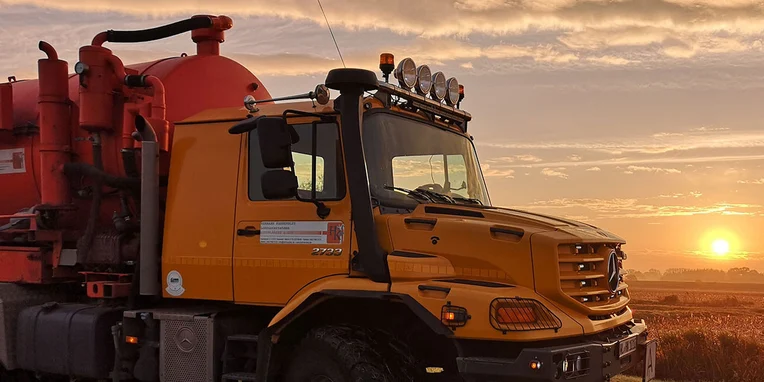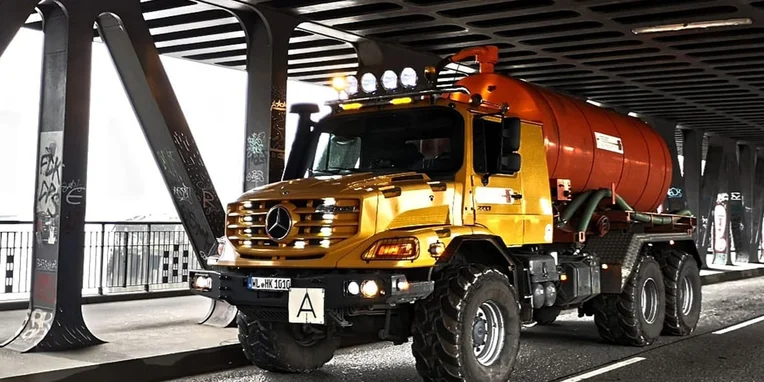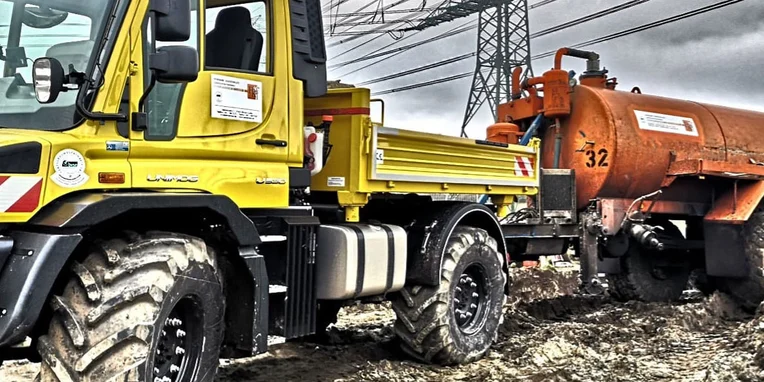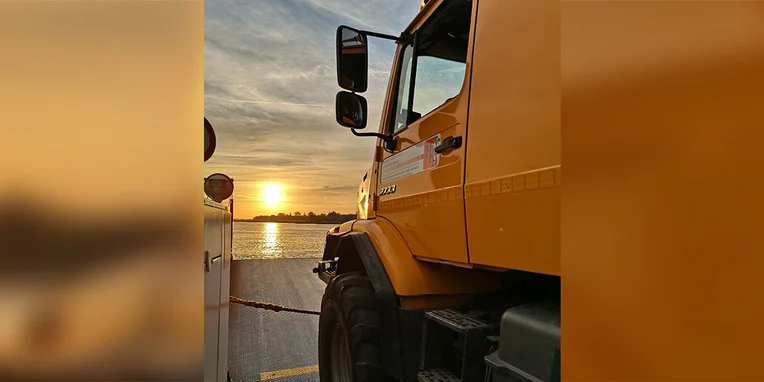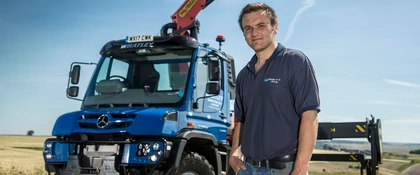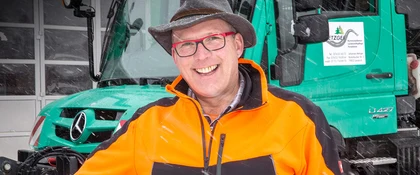Unimog and Zetros reliably help remove drilling fluid.
Whenever infrastructure work in Germany moves away from the beaten track, contractor Hermann Kahnenbley from near Hamburg is on-hand to help. His company is specialised in the removal and recycling of drilling fluid. The certified specialists take care of electricity cables, gas lines, water pipes and telecommunications lines as well as all manner of supply and draining shafts which are produced by means of drilling. "There's no-one else in Germany who does things the way we do," says Managing Director Hermann Kahnenbley proudly. He has 14 employees – and if necessary, they even work across European borders.
We need this vehicle because of its extreme off-roading capabilities.
Hermann Kahnenbley, Managing Director of contractor Hermann Kahnenbley
A must on any construction site: the Unimog U 530 (300 hp).
15 years ago, he started using his first Unimog. "We've just continued to use a Unimog so that we can be sure we can get where we need to in the demanding terrain." His latest model is a valuable addition to the specialist fleet. Equipped with a hydraulic power take-off shaft, the Unimog is used for operating a vacuum pump. The drilling mud is then removed in a twelve-cubic-metre container trailer. "With the Unimog we can take all of the materials we need directly to the drilling hole. Instead of an aluminium tipper platform, we need one with steel sideboards," explains Hermann Kahnenbley.
Enhanced technical developments.
Whereas 20 years ago, time-consuming digging had to be carried out, it is now possible to use vertical drilling. This saves drastic amounts of time and causes less damage to the surrounding ground. Horizontal drilling, micro-tunneling, pipe jacking or even well building accumulate correspondingly vast amounts of drilling mud as a result of high-pressure flushing. This then has to be quickly removed from the construction site. "Without analysing the ground beforehand, we're not allowed to remove anything," explains specialist Kahnenbley. "Only when we know for sure whether and what pollution the ground contains are we allowed to get on with our work."
